
10 minute read
Michael Rall – Passionate and Professional
FEATURE JESPER KJØLLER
PHOTOGRAPHY MICHAEL RALL
He is equally comfortable handling the biggest and most expensive underwater cinema camera-systems, and the smallest GoPros. He captures anything, from the tiniest marine creatures, to swimming elephants. Meet the South African, Dubai based underwater photographer and filmmaker, Michael Rall.
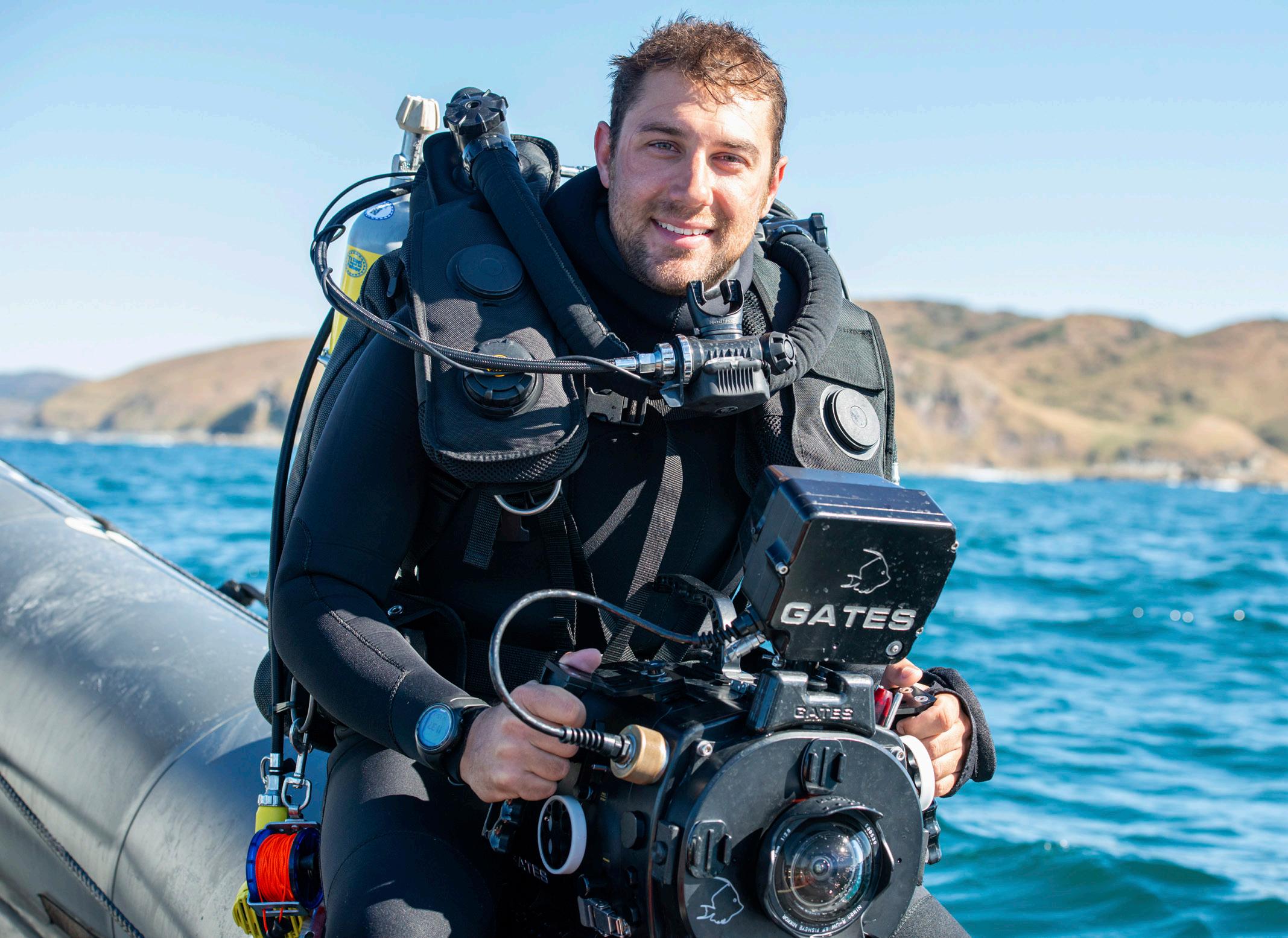
Michael Rall: Sardine Run, South Africa.
Joel Schaeffer
Michael was raised in Durban, South Africa. Durban is right on the coast, so he grew up around the ocean and he spent his childhood swimming, bodyboarding, and spearfishing. His family was not particularly interested in the ocean, but they always supported him in his passion.
“After school and on the weekends, we would catch buses and go to the beach to surf”, Michael remembers.
“I don’t really know what attracted me to the ocean. It was something powerful and mystical, I guess. I could stare at crashing waves for hours”, he adds.

Cenotes, Mexico.
The young Michael used to love to watch National Geographic documentaries with his grandfather, and he soon developed his curiosity for marine life.
“Before I began scuba diving, I kept aquariums – that was my passion. I would freedive and catch the fish, and set up the ecosystems myself. When I finished high school, I did not really know what I wanted to do, but I knew it had to be related to the ocean and marine biology. I contemplated studying ichthyology or aquaculture, but I never really went further or made any definite career choices”, he says.
Michael learned to scuba dive in 2003 in Durban. The course was a gift from his parents for finishing high school. He loved the diving course and he quickly expanded his education as a diver by taking more courses. There were loads of dive centres and dive clubs in the area, and he soon landed his first job employed as a bartender in a local dive club. He was the barman, he looked after their marine aquarium, and on the weekends, when the bar was closed, he would go diving and take more courses.
“I can still remember telling my instructor during my PADI Open Water course that I also wanted to become an instructor myself one day. But it took me a long time to get there”, Michael recalls.
“After high school, I went to the UK to study in London for two and a half years. I got a job managing the largest private collection of marine fish and invertebrates in Europe at the time. I also did my PADI Divemaster training while I was there. I did it in the famous inland training site of Stoney Cove in Leicestershire”.
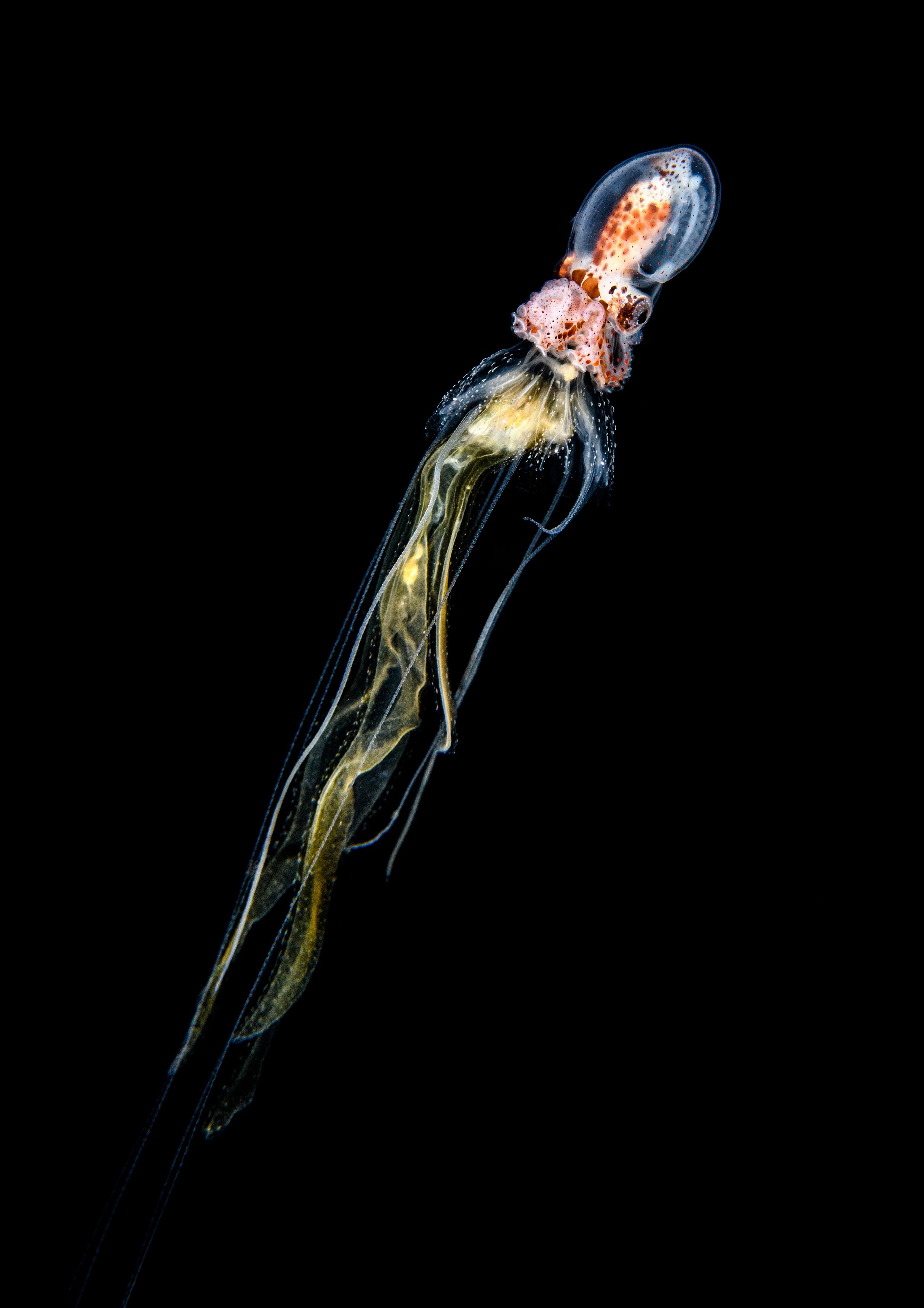
Nautilus and jellyfish, Philippines.
NO PLAN
When Michael eventually went back to South Africa, he still had no clear career plan. After a year back in Durban, he had spent almost all the money he had saved. He managed to get a skipper’s license, and one day a friend called him and invited him to come to Dubai to work as a captain on a yacht.
“The position that I was promised actually never happened, but I was lucky to get a job interview with a company that managed a fleet of yachts in Dubai. I was very fortunate to be the right man at the right time and place – pretty much the same story for everything I’ve done! I have been very lucky that way”, Michael says with a smile.
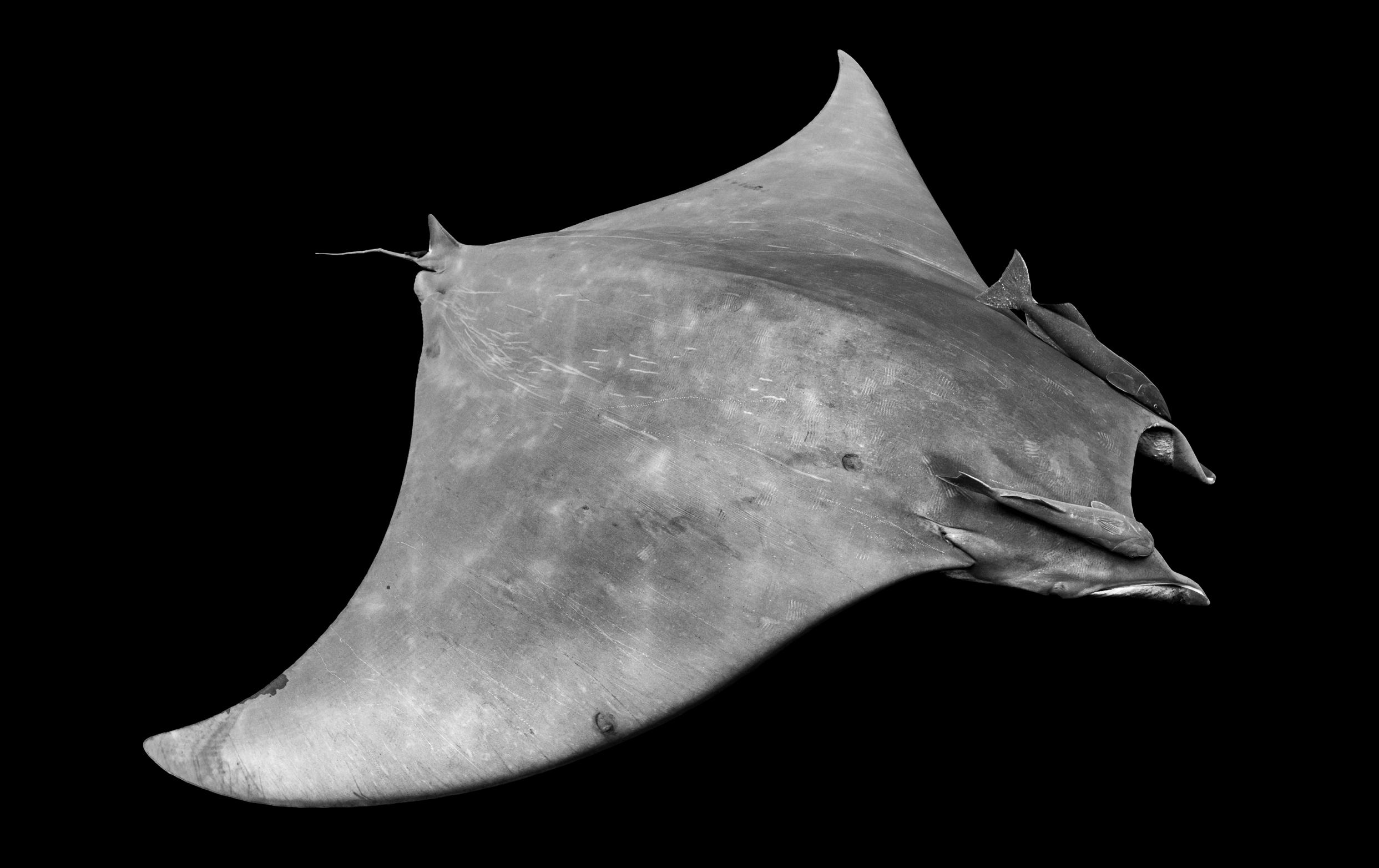
Mobula Ray, Azores.
He eventually got a job on M/Y Dubai Shadow, the support vessel for the superyacht M/Y Dubai. He worked with superyachts for four years as a dive guide, watersports instructor, and tender engineer. He would arrange diving and spearfishing trips for the VIP clients on board. During this time, Michael also got to finally fulfil his goal and he did his PADI Instructor course.
“I was spending so much time underwater that I began shooting images with simple point-and-shoot cameras. It was more of a hobby at this point – something to do while I was scuba diving. My interest in marine life is quite obvious when I look at my first pictures today – they were merely identification images documenting a species and not really very well composed”, says Michael with a laugh.
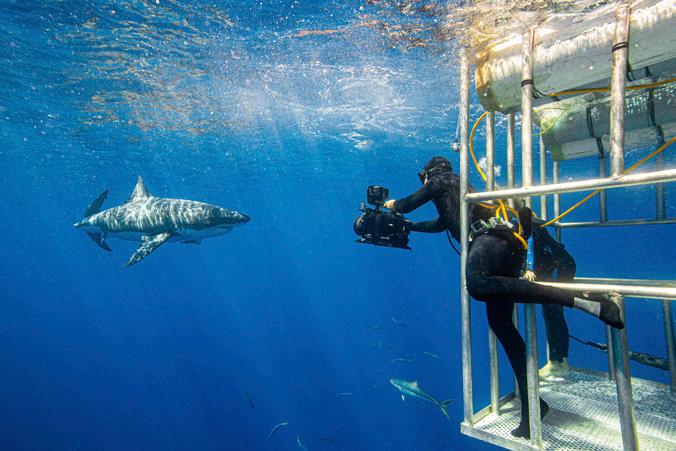
Michael filming a GreatWhite in Guadalupe
Joel Schaeffer
LUCKY AGAIN
In 2012, he had had enough. He was done with yachting. He had polished enough stainless steel and scrubbed enough decks. But again, he was lucky. He got the offer to manage a private dive team.
He improved the team’s capacity to be able to handle freediving, scuba diving, underwater photography and filming, as well as special marine projects. During this time, he was asked to go and do location scouting for an underwater sequence that was to be shot around Socotra Island, outside Yemen. The underwater scenes would eventually be included in a very ambitious feature documentary project called Awaken. This documentary was shot over a five-year period in more than 35 countries and explores humanity’s relationship with technology and the natural world. It is directed by Tom Lowe, executively produced by cinema pioneers Terrence Mallick and Godfrey Reggio, and narrated by Liv Tyler.
At first, Michael supported the underwater scenes at Socotra Island with logistics. However, he was also asked to operate the underwater cinema cameras, even though he only had experience with still photography.
“At this point in my career, I had zero experience with cinema cameras, but I must have done all right because the director later approached me and asked me if I would like to join the film crew as they had planned many more underwater sequences around the world. Since I already had experience with still photography underwater and had a good eye for shots and framing, they realised that it would be easier to teach me as a diver to operate a movie camera, than to teach a camera operator to dive to my level”, Michael recalls.
TRUE PASSION
Awaken was produced by Dubai Film. All the specialised underwater equipment purchased for the project were added to Dubai Films arsenal of movie-making tools, and Michael was brought in to organise the underwater filming equipment.
“It was really exciting to be involved in Awaken as it gave me an opportunity to travel the world, see amazing things, and learn new skills simultaneously. In the beginning, filming was secondary for me, but through travelling and all these experiences, I discovered my true passion”, Michael recalls.
“My true passion is capturing life underwater. Whether it is still or video, that is what I want to do. As a career, underwater filming is great, and I love doing it, but underwater photography is what I do in my spare time as a hobby. When I dive with a camera today, the diving part is just second nature – it is on autopilot, I don’t have to think about it at all”.

Bluefin Tuna, Malta
LEARNING ON THE JOB
Today Michael still splits his time between managing the dive team and doing underwater filming projects. The proportion of the work varies with the season and with the different projects – quite often, managing the dive team and working with underwater film shoots overlaps as there is filming needs in the dive team, and diving needs in the film work.
“I have still not done any formal training as a camera operator – I have been looking for courses, but they don’t really exist. Instead, I have been lucky to learn on the job and to be around very talented people. When I find something I’m truly passionate about, I immerse myself in it and try to learn as much as I can from any source”.
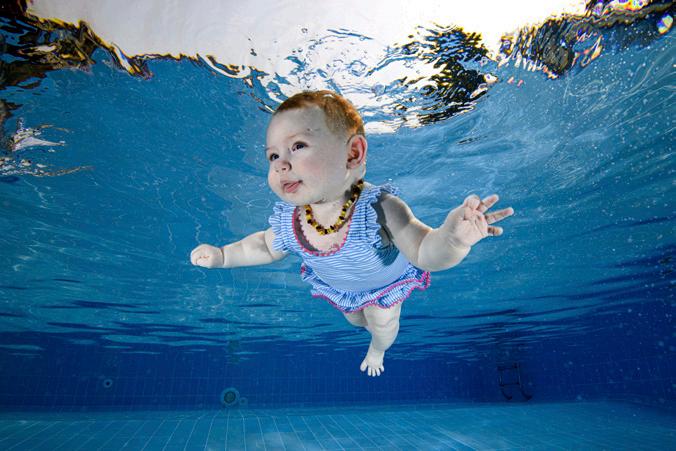
Riley (Daughter), Dubai.
Michael’s background in marine aquariums has been a huge advantage in working as an underwater photographer and a camera operator.
“A deep understanding of marine biology, including behaviour, habitats, and physiology, makes it easier to predict how the animals will behave and anticipate what the fish are going to do next”, says Michael.
“I almost never dive without a camera in my hand. I am always diving to capture something, to tell a story, and to share it with people.
NO HANDS
His future plans are to expand his network in the film industry and get sought after for his craft. He will create more special projects, and he would love to be involved in more underwater filming for the BBC and do more with the Discovery Channel for projects like the Blue Planet or Shark Week as a camera operator or underwater unit director.

Cuttlefish, Philippines
“One thing I enjoy is filming while freediving. First of all because it is challenging. Obviously, you are on a single breath, so you really need to relax and focus to be able to get the shot. You can’t run out of breath in the middle of a sequence. When you are freediving, your temperament is different, and your bodylanguage is altered, so the animals respond differently, almost like you’re one of them. I’m fortunate to be able to do hands-free equalisation. That technique allows me to relax and have both hands on the camera while diving down”.
Michael also has an interest in technical diving. As anyone with a passion for scuba diving, there is a natural inclination to expand limitations and to go deeper.
“I think I began in 2012 with the first courses in technical diving. To be able to do deep dives and long decompression dives gives creditability in the film industry. The more you can do and the fewer limitations you have, the more attractive you will be”, Michael says.
Michael also wants to expand his rebreather diving skills as closed-circuit diving has many advantages from a logistical point of view. It is easier to get close to marine life. Economical gas usage allows for longer dive times. With the price of helium going up, the rebreather is a more cost-effective alternative to traditional open-circuit scuba.
THE ELEPHANT IN THE ROOM
“Among my absolute favourite dives are the caves and cenotes in Mexico. There is something special about cave diving. Just to capture the light. For me, it is not so much the exploration – I haven’t gone very far into the caves. Staying close to the entrances is where you get that magical feeling and the beautiful light and shadows. I love that. I could spend so much more time there.

Rajan the Elephant, India.
Among other favourite diving and travelling experiences is of course diving with Rajan, the swimming elephant in the Andaman Islands, while filming for Awaken”.
FACT FILE
• Michael Rall lives in Dubai with his wife and daughter.
• 5,000+ dives.
• Trimix certified.
• Instructor in scuba, freediving, uwphotography and uw-videography.
• Overall Winner to EDA’s Digital Online competition 2020.
• 2nd place Wide Angle category to EDA’s Digital Online competition 2019.
• 3rd place Black & White category to EDA’s Digital Online competition 2018.
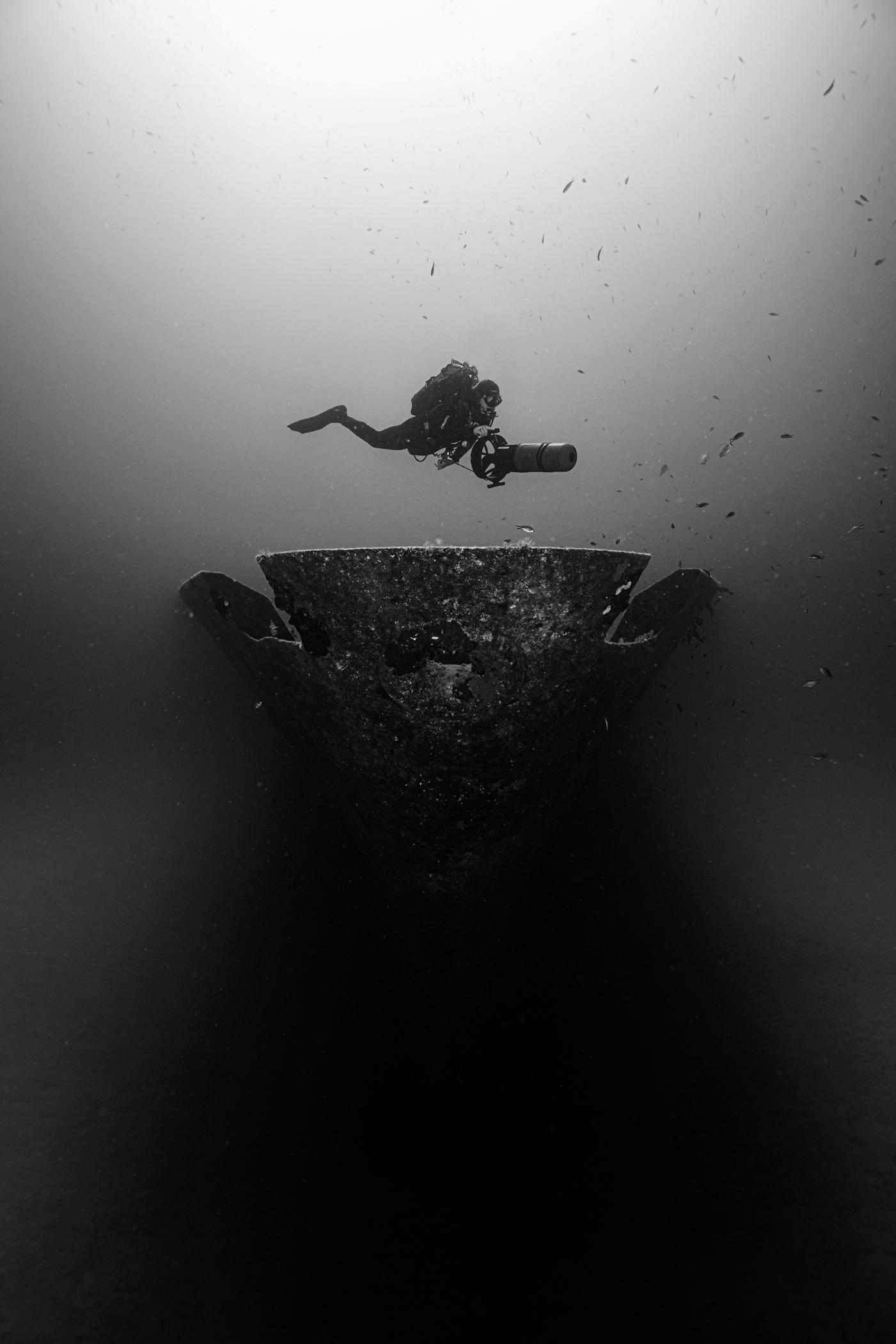
Umm Al Faroud Wreck, Malta.
EQUIPMENT
STILL PHOTO | Michael uses a Nikon D850 in a Nauticam housing with Inon Z330 strobes and an Orcatorch 910V focus light.
“I like this setup because it is ergonomic, and the D850 is an amazing still camera. I like to shoot both macro and wide angle, but with the visibility in Dubai, it is usually macro”.
CINEMA | Michael has experience with many different underwater camera systems, but he always uses Gates Underwater Housings.
“They are extremely well designed and tough. You can always rely on them. The cinema cameras I usually use underwater are RED, Arri, Phantom Flex, and a few others. The Phantom Flex shoots super slow-mo at 1,000 frames per second at 4K resolution creating dreamy super slow-motion footage”.
PROJECTS | Nike Women of Arabia TVC, Etihad Special Olympics TVC and various XDubai stunt videos. Discovery Channel Tanked in Dubai, Bollywood film Tiger Zinda Hai.
LOCATIONS
• PORT ST. JOHNS, SOUTH AFRICA | 24 days on the water filming the sardine run in the middle of winter.
• AUSTRIA | Cold water diving in a flooded green lake of 4˚C.
• GUADALUPE, MEXICO | Diving with great white sharks.
• CRYSTAL RIVER, FLORIDA, USA | Filming a mother manatee and her calf.
• CHANNEL ISLANDS, USA | Freediving in the kelp forest, filming 1,000 frames per second slow-mo sequences.

A Dubai Turtle Rehabilitation Project release.
WEB AND SOCIAL MEDIA
www.michaelrall.com
INSTAGRAM: @mike_rall
FACEBOOK: @michaelralldeepimagery










